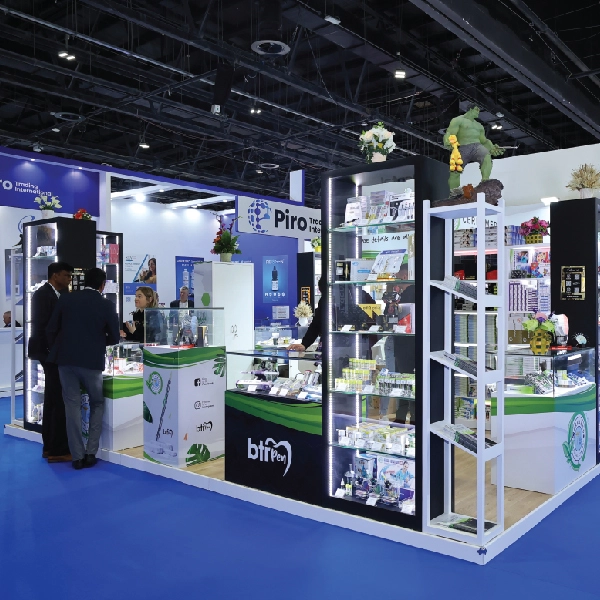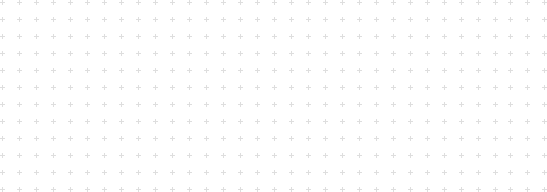Edit Content

Your Vision, Our Craftsmanship
Exhibition Stand Design Dubai
Exhibitions and trade shows are vital platforms for businesses to showcase their products and services to a broader audience. In a bustling city like Dubai, where the competition is fierce, standing out from the crowd is paramount. Our Exhibition Stand Design and Fabrication Company Dubai specializes in creating unique, eye-catching exhibition stands that not only attract visitors but also leave a lasting impression. Our designs are tailored to reflect your brand’s identity and communicate your message effectively, ensuring that your booth becomes a focal point at any event.




Precision in Design, Excellence in Fabrication
Leading Exhibition Stand Design and Fabrication Company Dubai
Our team of experienced designers and fabricators work closely with clients to understand their specific needs and objectives. We believe that every brand has a unique story to tell, and our mission is to bring that story to life through innovative stand designs. From the initial concept to the final build, we ensure that every detail is meticulously planned and executed. Our comprehensive approach includes 3D visualization, which allows clients to see a detailed representation of the stand before construction begins, ensuring complete satisfaction.
Quality and functionality are at the heart of our design philosophy. We use high-quality materials and cutting-edge technology to create stands that are not only visually stunning but also durable and practical. Our fabrication process is carried out in-house, giving us complete control over the quality and finish of the final product. This attention to detail ensures that our stands are not only beautiful but also functional, providing ample space for product displays, demonstrations, and customer interactions.
As an Exhibition Stand Design and Fabrication Company Dubai, we understand the importance of timely delivery. We adhere to strict timelines and ensure that your stand is ready well before the event date. Our project managers coordinate every aspect of the process, from logistics to installation, ensuring a hassle-free experience for our clients. We also provide on-site support during the event to address any last-minute adjustments or issues that may arise, allowing you to focus on engaging with your audience.
Sustainability is another key aspect of our services. We are committed to minimizing the environmental impact of our operations by using eco-friendly materials and processes wherever possible. Our sustainable practices not only help protect the environment but also align with the growing preference for green solutions among businesses and consumers. By choosing our company, you can be confident that your exhibition stand will not only look great but also contribute to a more sustainable future.
Customer satisfaction is our top priority. We pride ourselves on delivering exceptional service and building long-term relationships with our clients. From small businesses to large corporations, we have worked with a diverse range of clients across various industries. Our portfolio showcases a wide array of stand designs, each tailored to meet the unique needs and preferences of our clients. Whether you are participating in a local trade show or an international exhibition, our team is dedicated to making your brand shine.
Our Exhibition Stand Design and Fabrication Company Dubai is your ideal partner for creating impactful exhibition stands. With our expertise, creativity, and commitment to quality, we ensure that your brand stands out and makes a memorable impression at any event. Contact us today to discuss your requirements and let us help you take your exhibition presence to the next level.

Dubai’s Premier Exhibition Stand Experts
Transform your brand's presence with our top-tier exhibition stand design and fabrication services in Dubai. Engage, attract, and captivate your audience with stunning, custom-built stands tailored to your unique vision. Contact us today to elevate your next event!
Our Services
General FAQ's
Fabrication in the context of exhibitions refers to the process of designing, constructing, and assembling the physical components and structures that make up an exhibition. This involves creating custom-built displays, interactive installations, and other exhibit elements to bring the exhibition's concept to life. Fabrication ensures that the exhibit is visually appealing, functional, and aligns with the intended message or theme.
Key aspects of fabrication in exhibitions include:
Design and Planning: Collaborating with designers, architects, and curators to develop detailed plans and blueprints for the exhibit. This phase involves conceptualizing the layout, selecting materials, and ensuring all elements fit together seamlessly.
Material Selection: Choosing appropriate materials that are durable, aesthetically pleasing, and suitable for the exhibit's environment. Common materials include wood, metal, glass, fabric, and various types of plastics.
Construction: Building the components of the exhibit, which can range from simple display cases to complex interactive installations. This step often requires skilled craftsmen, carpenters, and technicians.
Customization: Tailoring each piece to meet specific requirements. Customization may involve special finishes, unique shapes, or incorporating technology such as lighting, sound, and interactive elements.
Assembly and Installation: Transporting the fabricated components to the exhibition site and assembling them according to the design plan. This includes ensuring that all pieces fit together correctly and are securely installed.
Quality Control: Conducting thorough inspections to ensure that all elements are constructed and installed to the highest standards. Any necessary adjustments or repairs are made during this phase.
Maintenance and Dismantling: Providing ongoing maintenance during the exhibition to keep everything in top condition. After the exhibition ends, the fabricated elements are carefully dismantled and stored or repurposed for future use.
Booth fabrication is the process of designing, building, and assembling custom trade show or exhibition booths. This process involves creating unique and eye-catching structures that effectively showcase a company's brand, products, or services at events such as trade shows, conferences, and exhibitions. Booth fabrication combines elements of architecture, interior design, and branding to create a cohesive and engaging display.
Key aspects of booth fabrication include:
Concept Development: Collaborating with designers and branding experts to develop a concept that aligns with the company's goals and objectives. This phase involves understanding the brand identity, target audience, and key messages to be communicated.
Design and Planning: Creating detailed blueprints and 3D renderings of the booth. This includes planning the layout, selecting materials, and designing graphics and signage. The goal is to create a visually appealing and functional space that maximizes engagement and flow.
Material Selection: Choosing materials that are durable, lightweight, and visually appealing. Common materials include aluminum, wood, fabric, acrylic, and various types of plastics. The selection depends on the design requirements and budget.
Construction: Building the booth components, which may include walls, counters, displays, shelving, lighting, and interactive elements. Skilled craftsmen, carpenters, and technicians are often involved in this stage to ensure high-quality construction.
Customization: Tailoring the booth to meet specific requirements. This may involve custom graphics, unique structural elements, special finishes, and the incorporation of technology such as digital screens, interactive displays, and lighting effects.
Transportation and Installation: Transporting the fabricated components to the event venue and assembling them according to the design plan. This includes ensuring all elements fit together correctly and are securely installed. Professional installation teams are typically involved to manage this process efficiently.
On-site Support and Maintenance: Providing support during the event to address any issues that arise and ensure the booth remains in top condition. This may include technical support for interactive elements and regular maintenance of the booth.
Dismantling and Storage: After the event, the booth is carefully dismantled and packed for transportation back to storage or for use in future events. This process involves ensuring all components are handled with care to maintain their quality for future use.
Fabrication encompasses a wide range of techniques and processes used to create and assemble components for various applications. The main types of fabrication can be categorized based on the materials and methods used. Here are the primary types of fabrication:
Metal Fabrication:
Cutting: Methods such as laser cutting, plasma cutting, and waterjet cutting are used to shape metal sheets or bars into specific forms.
Welding: Joining metal pieces together using techniques like MIG, TIG, and arc welding.
Bending: Using press brakes or roll benders to create bends and angles in metal.
Machining: Processes like milling, turning, and drilling to shape metal parts with precision.
Assembling: Combining metal components into a final product using fasteners, adhesives, or welding.
Wood Fabrication:
Cutting: Using saws (circular saws, band saws, jigsaws) to shape wood into desired forms.
Joinery: Techniques like mortise and tenon, dovetail, and biscuit joints to connect wood pieces.
Finishing: Sanding, staining, and varnishing to enhance the appearance and durability of wood products.
Carpentry: Constructing structures or components from wood, including cabinetry, furniture, and framing.
Plastic Fabrication:
Cutting: Methods such as laser cutting, CNC routing, and die cutting for shaping plastic materials.
Thermoforming: Heating plastic sheets and molding them into specific shapes using vacuum forming or pressure forming.
Injection Molding: Injecting molten plastic into molds to create complex shapes.
Extrusion: Pushing plastic material through a die to create long, continuous shapes.
Welding and Bonding: Joining plastic components using solvent welding, ultrasonic welding, or adhesives.
Textile Fabrication:
Cutting and Sewing: Shaping and assembling fabrics into garments, upholstery, or other products.
Weaving and Knitting: Creating textiles from yarns or threads.
Dyeing and Printing: Applying colors and patterns to textiles.
Embroidery: Adding decorative stitching to fabrics.
Composite Fabrication:
Layering: Combining multiple materials (e.g., fiberglass, carbon fiber) with a resin matrix to create strong, lightweight components.
Molding: Using molds to shape composite materials.
Vacuum Bagging: Applying pressure to ensure even distribution of resin and removal of air pockets.
Glass Fabrication:
Cutting: Shaping glass sheets using diamond-tipped tools or waterjet cutting.
Tempering: Strengthening glass by heating and rapidly cooling it.
Laminating: Creating safety glass by bonding multiple layers with a plastic interlayer.
Etching and Sandblasting: Creating decorative patterns on glass surfaces.
To achieve better fabrication, consider the following nine strategies:
Detailed Planning: Ensure thorough design and planning to avoid errors and optimize workflow.
Material Selection: Choose the right materials for durability, performance, and suitability for the project.
Precision Cutting: Use advanced cutting techniques like laser or waterjet cutting for accuracy.
Quality Control: Implement rigorous quality checks at every stage to maintain high standards.
Skilled Workforce: Employ experienced and well-trained fabricators to enhance craftsmanship.
Advanced Technology: Invest in modern tools and machinery for efficiency and precision.
Continuous Training: Provide ongoing training for staff to keep up with the latest fabrication techniques and technologies.
Effective Communication: Maintain clear communication among team members to ensure everyone is aligned with project goals.
Sustainability Practices: Incorporate sustainable practices by minimizing waste and using eco-friendly materials.
By implementing these strategies, you can improve the quality, efficiency, and overall success of your fabrication projects.
Exhibition stand design is the process of creating a visually appealing and functional space for displaying products or services at trade shows, exhibitions, and events. It involves:
Concept Development: Crafting a theme and layout that aligns with the brand's message and objectives.
Visual Design: Incorporating graphics, colors, lighting, and signage to attract and engage visitors.
Structural Design: Planning the physical structure, including walls, counters, displays, and interactive elements.
Material Selection: Choosing appropriate materials for durability and aesthetic appeal.
Functionality: Ensuring the stand facilitates smooth visitor flow and effectively showcases products or services.
Technology Integration: Including digital screens, interactive displays, and other tech elements to enhance the experience.
Effective exhibition stand design captures attention, conveys the brand message, and creates a memorable experience for attendees.
Transform Your Vision into Reality

